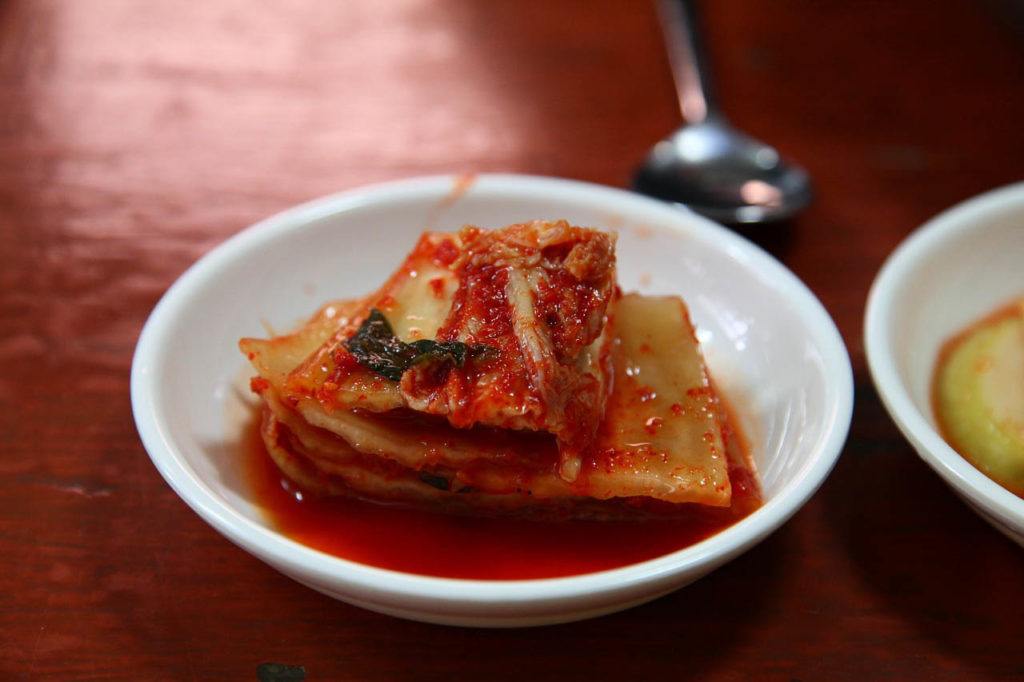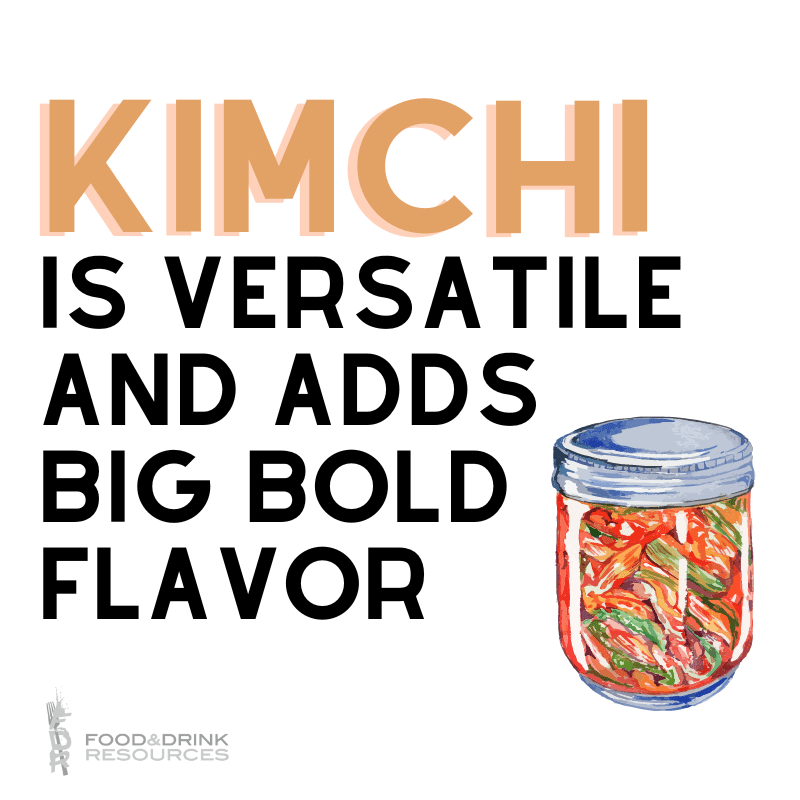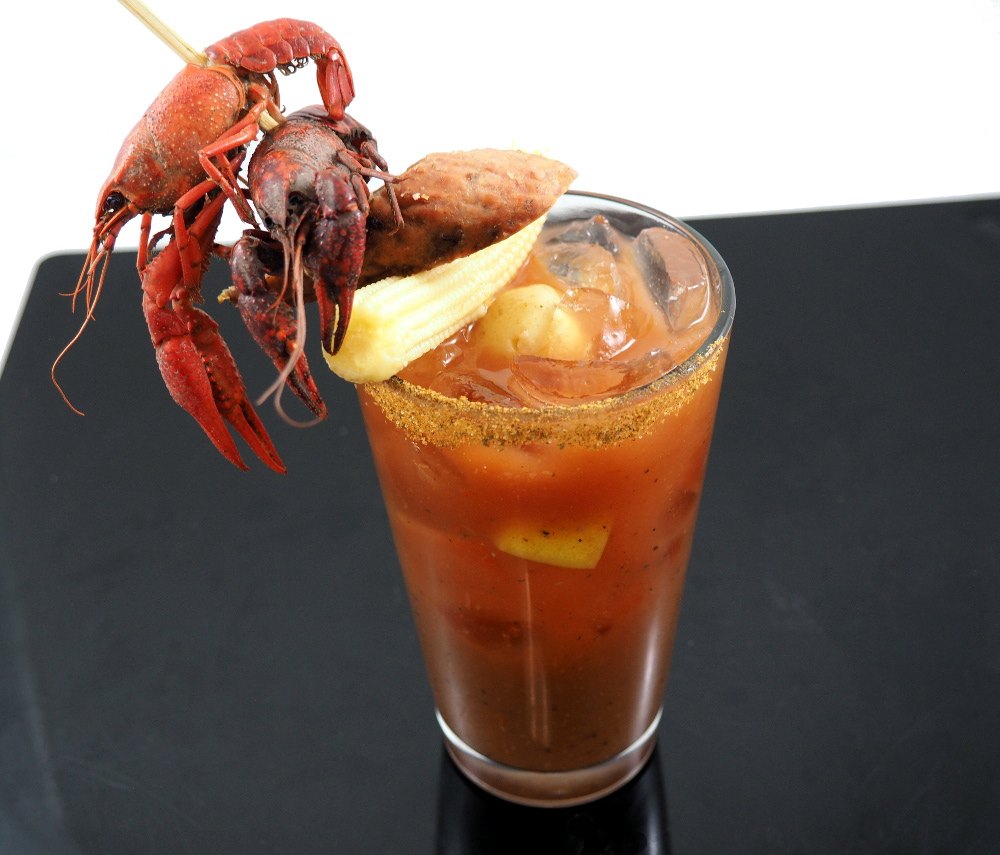What do you get when you combine the trends of fermented and spicy? You get kimchi (or kimchee)—a tangy and hot 4,000-year-old Korean staple that’s like a cross between a pickle and a salad.
Kimchi is showing up everywhere right now. Rightfully so, if you ask us. We love the stuff.
This article was originally published in November 2016 and updated in September 2023.

What Is Kimchi?
Kimchi is the national dish of Korea and has been a cornerstone of the Korean diet for ages. The word kimchi is derived from the Korean word “shimchae” which means “salting of vegetables”. Traditionally, kimchi was a way to preserve vegetables for the hard Korean winters. Women gathered together at the end of the year to make kimchi for the seasons to come. They packed the vegetables with brine and spices into jars and allowed them to ferment underground for months.
In Korea, the different types of kimchi depend on the season, region, and available ingredients. The most common vegetables used are cabbage, radish, scallion, and cucumber. The most common seasonings are spices, ginger, garlic, shrimp sauce, oyster sauce, fish sauce, and red pepper, which is a new world ingredient that has become a main ingredient for spice and heat.
Kimchi is usually served alongside a meal, like salt and pepper, or incorporated into the main course like in Kimchi Bokkeumbap (kimchi fried rice), Kimchi Cigae (kimchi stew), Kimchi Jun (kimchi pancakes), and Tteokbukki (kimchi rice cakes).
It’s nutrient-rich and promotes digestion due to beneficial lactobacilli bacteria produced during fermentation.
We love the kimchi food trend because it’s versatile and adds a big, bold flavor to every meal. Though, we hesitate to call it a “trend.” Can a thousand-year-old food really be trendy? Clearly, it’s here to stay.

Get Your Own Kimchi
Kimchi can be everything from vegan to not vegan, mild to spicy, and not too sour to really sour. Beyond Korean markets, you can get kimchi at conventional grocery stores, specialty food markets, and farmers’ markets. Restaurants are serving up house-made kimchi, and small-batch makers across the country are creating their own take on this old recipe. You can also make your own kimchi at home. This is a great recipe.
How We Make Good Use Of The Kimchi Food Trend
We love traditional ways of cooking with and eating kimchi. But we also like to mix it up, too. Here are some of our favorites from our own kitchen and what we’re seeing around.
- Kimchi Kobe Beef Hot Dogs
- Grilled Kimchi + Jalapeno Pimento Cheese Sandwich (It’s a lot like a Grilled Cheese.)
- Kimchi Pork Belly Tacos
- Korean BBQ Brisket and Kimchi Pizza
- Kimchi Reuben Sandwich
- Kimchi Bloody Mary (see recipe below)
- Kimchi Burger with Smoked Bacon + Gochujang Mayo (This burger looks pretty good, too.)
- Shrimp Po’ Boy with Kimchi Slaw
- “Corned” Pork with Kimchi + Chinese Mustard
- Kahlua Pork, Garlic Pickles, Kimchi Sliders
- Kimchi butter that you can use on…everything
….and yes, you can serve kimchi with your turkey on Thanksgiving. Try it as a topping for your leftover Turkey Reuben Sandwich on Black Friday. Kimchi might even cure what ails you from too much holiday cheer the day before!
Kimchi Bloody Mary Recipe
Try this Kimchi Bloody Mary from the chefs at FDR, and check out these farm-to-table cocktails, too.
Ingredients
- 1 cp. Kimchi
- 23 oz. Tomato Juice
- 2 tbsp. Sriracha Sauce
- ¼ tsp. Wasabi
- 1 tbsp. Worcestershire sauce
- 1 tbsp. Rice Wine Vinegar
- ¼ tsp. Sesame Oil
- Pink Himalayan salt
- Freshly Ground Pepper
- 1 cp. Vodka (We like Absolut Cilantro)
- Sushi roll slice (or crustacean, as pictured) for garnish
Instructions
- In a blender, puree the kimchi with the tomato juice, Sriracha, Wasabi, Worcestershire, vinegar, and sesame oil.
- Strain mixture in fine mesh strainer into a pitcher; keep working until you have about 3 cups of “Kimchi Mary” Mix.
- Discard the solids.
- Chill thoroughly, then season with salt and pepper and add chilled vodka.
- Serve in chillded glass over ice with garnish.
Thanks for stopping by and reading the Food & Drink Resources blog. Here we talk about food trends, culinary innovation, and the work of our team.
